Hello Everyone!!! Another day, another deployment post for you – Cisco WEBEX Using SCCM. In this post, we will learn about the Deployment of WEBEX using SCCM. Here we will show you the step-by-step guide for the Deployment of WEBEX Using SCCM using the Application model on Windows 10/11 devices.
An American company, Webex by Cisco, develops and sells unified communications as a service application, as well as web conferencing services. Cisco Systems acquired WebEx in 2007 after it was founded in 1995 as WebEx. San Jose, California, is the company’s headquarters.
An audio and video conference call application, WebEx is a multifunctional desktop application. Using the WebEx mobile app on your iPhone, iPad, Android, or Blackberry, you can meet with anyone, anywhere, in real-time, from your office or home.
The MSI application is the best method to deploy WEBEX to Windows 10/11 devices. In this Step-by-Step guide for WEBEX Application Deployment using SCCM, we will use the MSI file for the deployment.
- How to Deploy Zoom Application using SCCM
- Best Option to Deploy MS Teams MSI Using SCCM | ConfigMgr
- Slack Deployment Using SCCM MSI Application Guide
- Amazon Corretto Deployment Using SCCM | Step by Step Guide
What is an MSI file?
Windows packages that contain installation information, including files to be installed and installation locations, are called MSI files. The EXE and MSI files both install and launch Windows programs. The EXE file may not always contain an installer and may launch its program when double-clicked. An MSI file, however, always includes an installer.
WEBEX Deployment Using SCCM
Let’s start with the Deployment of WEBEX using SCCM. As told earlier, we are using the MSI file for WEBEX Deployment. You will see why the availability of MSI files for any application is always a joy for SCCM Admin. We don’t need to work on prerequisites as we used to tell you in the previous posts.
- All we have to do is download the MSI installer and the logo of the WEBEX, as we know it is available for download, and our half job is done.
One can easily download the 64-bit application directly from WEBEX. They have provided different setups for different environments. One can easily differentiate and choose the right setup for the Windows 64-bit architecture.
The following table gives you all the details required for the WEBEX Deployment tool using SCCM. This includes the command line for WEBEX silent install, Product Code, etc.
| Name | Install Command Line | Uninstall Command Line | Detection Method |
|---|---|---|---|
| WEBEX Deployment Tool – Windows Installer (*.msi file) | Install -> msiexec /i “Webex.msi” /q | Uninstall -> msiexec /x “Webex.msi” /q | Windows Installer – {4919D12C-EAE6-590E-B730-B3C8C2E97266} |
Create WEBEX Application Using SCCM Console
This MSI application deployment guide will use the SCCM admin console to create an application. To start with the Application creation part, copy the downloaded setup to the package source location of the SCCM Server.
- Navigate to SCCM Console \Software Library\Overview\Application Management\Applications.
- Right-click on Applications and select Create Application.
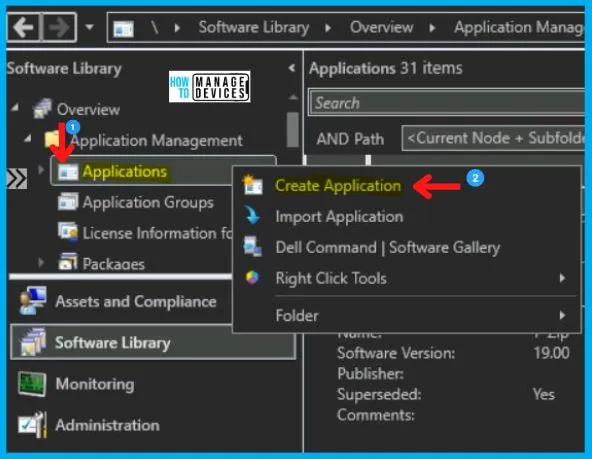
For all MSI application deployments, always Select the Automatically detect Information about the application from installation files and choose Windows Installer (.msi files) in the Type category. Also, enter the UNC Path for the application in Location and click Next.
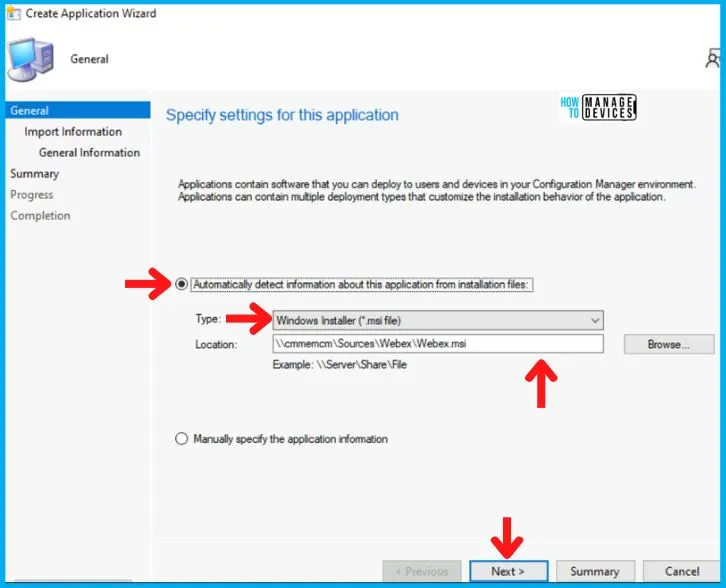
Now, something magical happens here, the thing for which MSI files are so famous. As soon you click on Next, you will see that all the information has been imported from the MSI file like install commands and detection logic as shown below, and click Next.
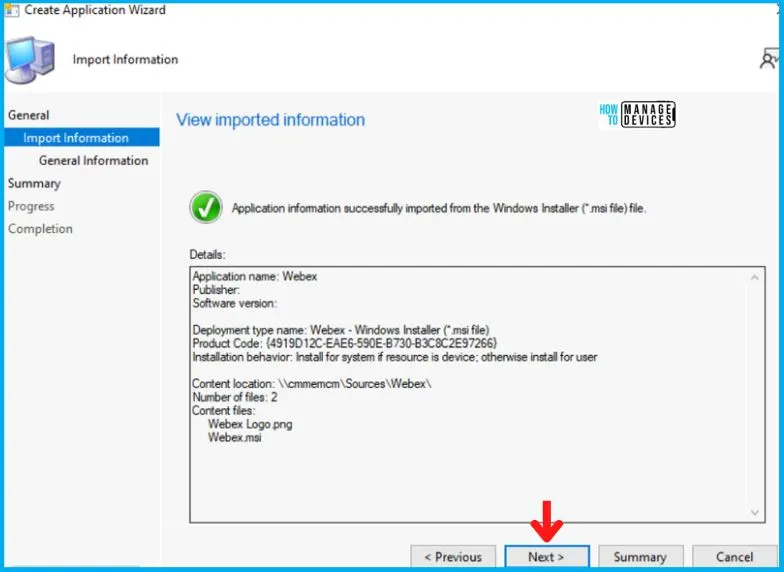
Also in the General Information Tab shown below, you will see it imports the install behavior/command (msiexec /i “Webex.msi” /q) from the installer itself.
- Silent Install Command Line for WEBEX = msiexec /i “Webex.msi” /q
- Uninstall Command Line – msiexec /x “Webex.msi” /q
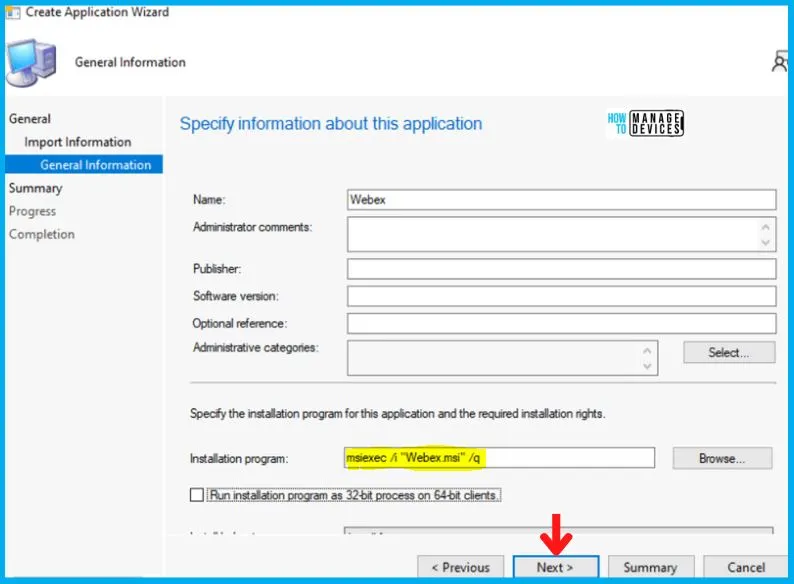
After this, click Next on the Summary Tab and end this Create Application Wizard by clicking on Close in Completion Tab.
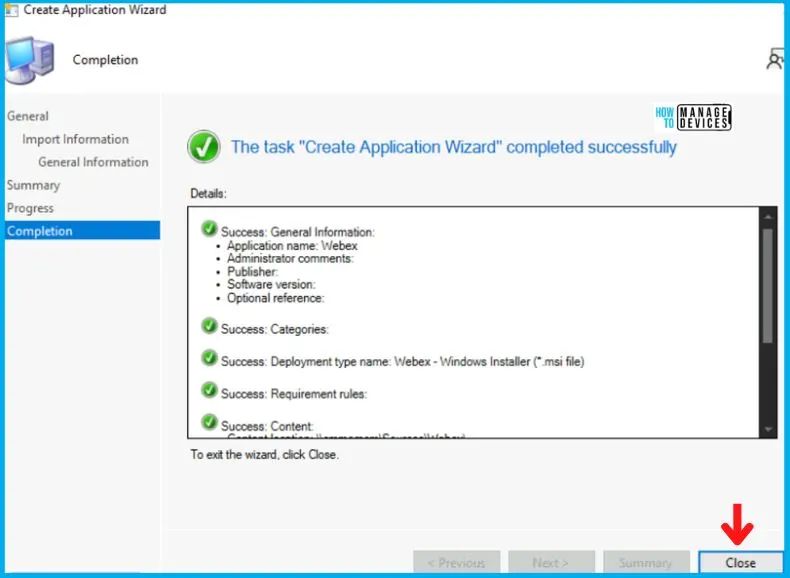
After the creation of the Application, it will appear in the Application Node. Now to Add an Icon to the WEBEX, right-click on the WEBEX and click on Properties.
After this choose Software Center Tab as shown below. And click on Browse in Icon and select the icon and click on Apply and OK as shown in the image below.
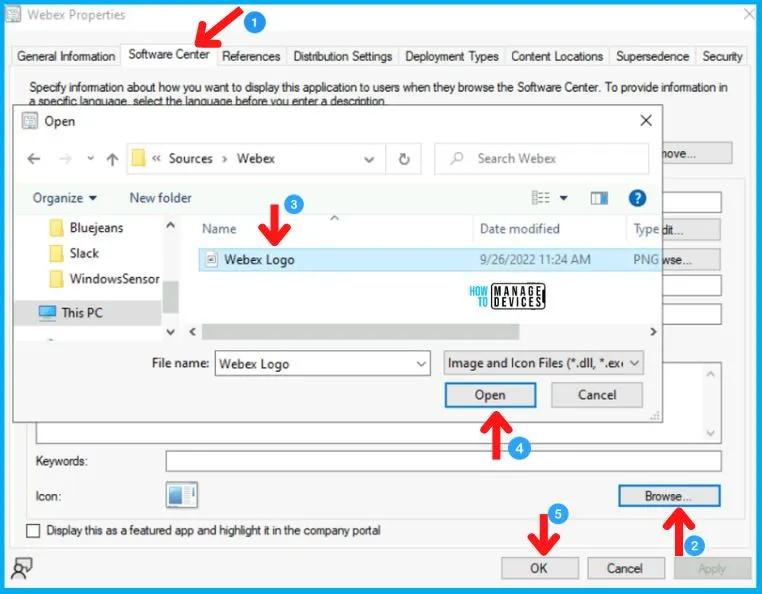
Distribute WEBEX Application to the DP
After the creation of the Application, it will appear in the Application Node. To begin with, the distribution right-clicks on the WEBEX Application and clicks on Distribute Content, as shown in the picture below.
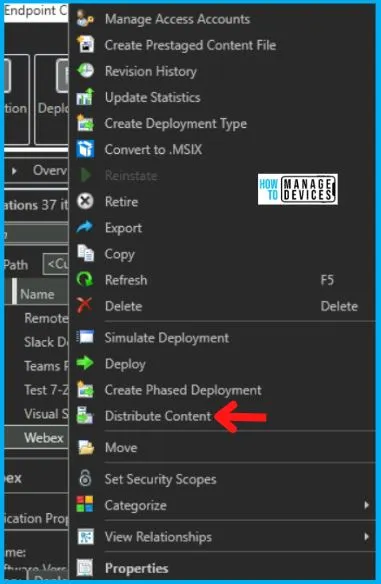
Now the Distribute Content Wizard will open, and click Next in the General Tab. Then select the Application Name in the Content Tab and Click on Next, as shown in the image below.
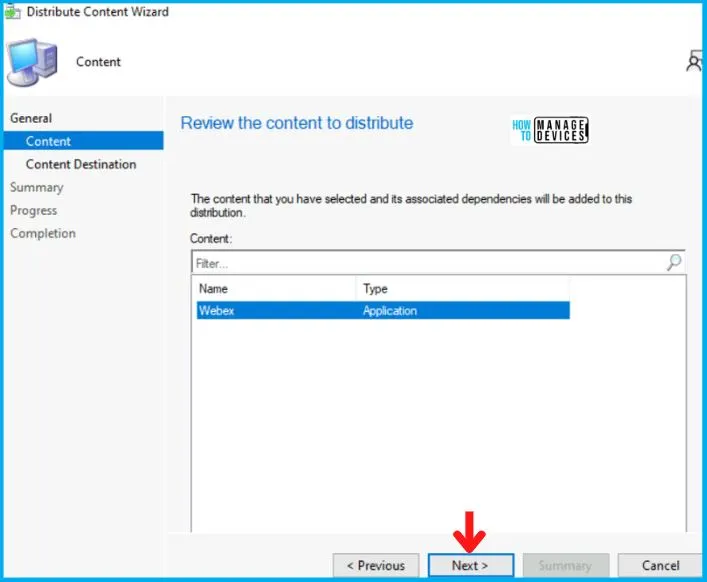
Now the Distribute Content Wizard will open, and click Next in the General Tab. Then select the Application Name in the Content Tab and Click on Next and in the Content Distribution tab click on ADD button as shown in the image below.
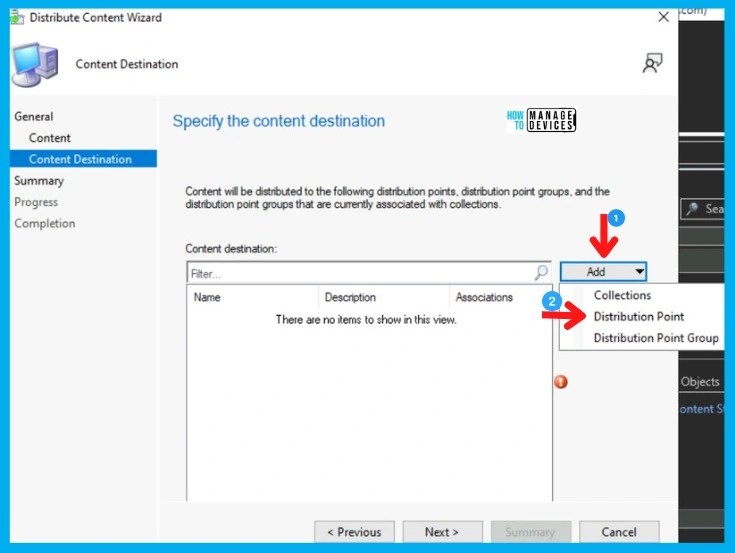
Then Add Distribution Point page will pop up, choose the Distribution Point on which you want to distribute the Application and click on OK, and then on Next.
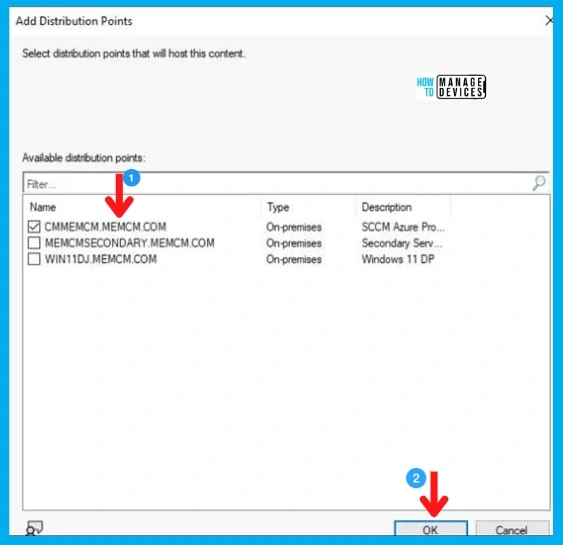
After this, Click Next on Summary Tab and complete this Distribution process by clicking Close on Completion Tab.
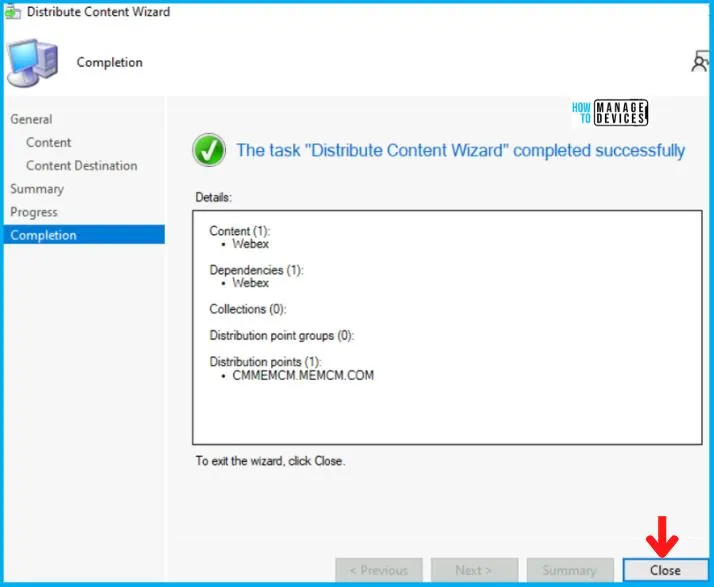
Deploy WEBEX using SCCM
So as of now, we have accomplished two tasks, i.e., Application Creation and Application Distribution to the DP. Now all left is the Deployment of the WEBEX on the All Windows 10 Device Collection.
- As you can see, your Application is displaying in Application Node, Right-click on WEBEX and select Deploy.
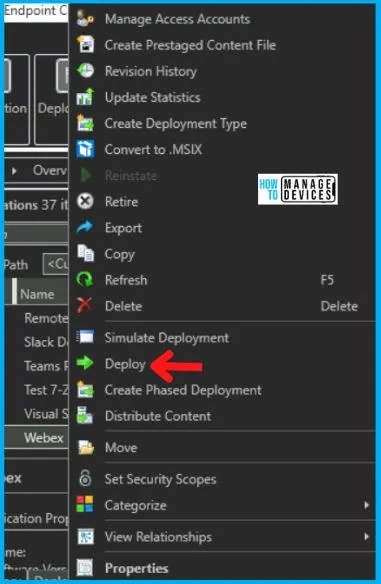
After this, Deploy Software Wizard opens, and in the General Tab, you will see the name of the application in the Name box and click on Browse to select the Collection.
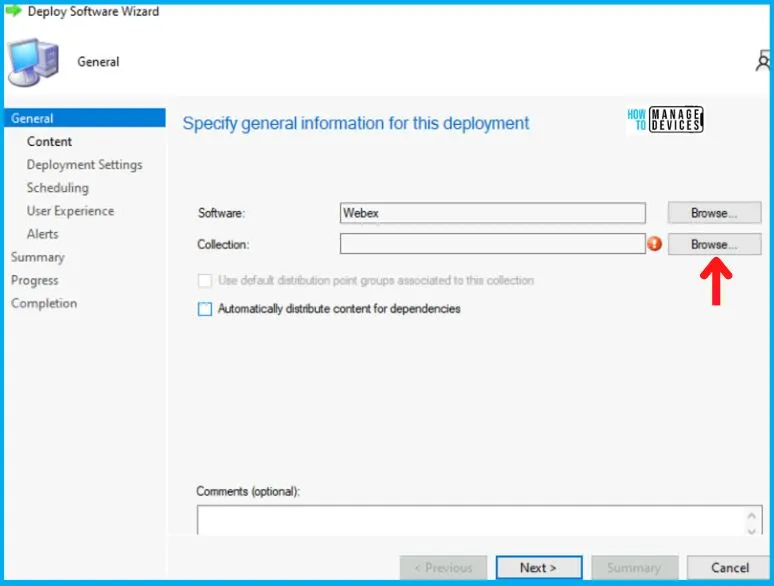
Now the Select Collection page will pop up; choose Device Collection from the drop-down menu, and then
- Select your targeted Device Collection and click on OK, and then Next.
- Here I choose All Windows 10 Devices or Windows 11 Devices
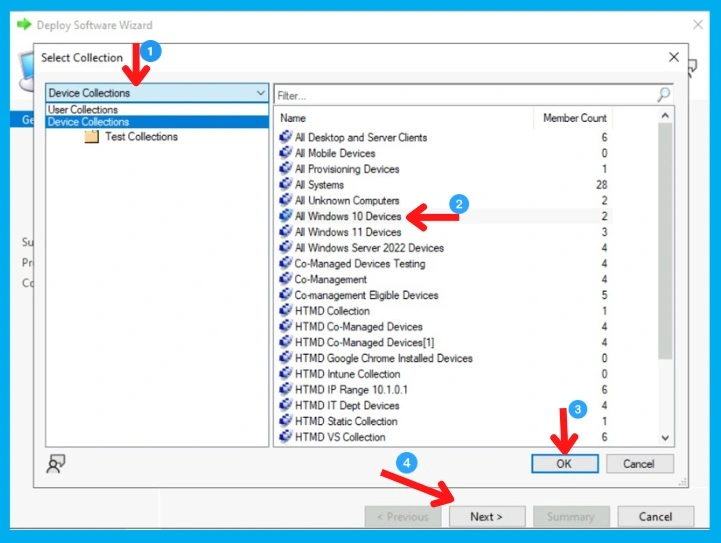
Now in the Deployment Settings Tab, select:
- Install in the Action box
- And choose Available in the Purpose category.
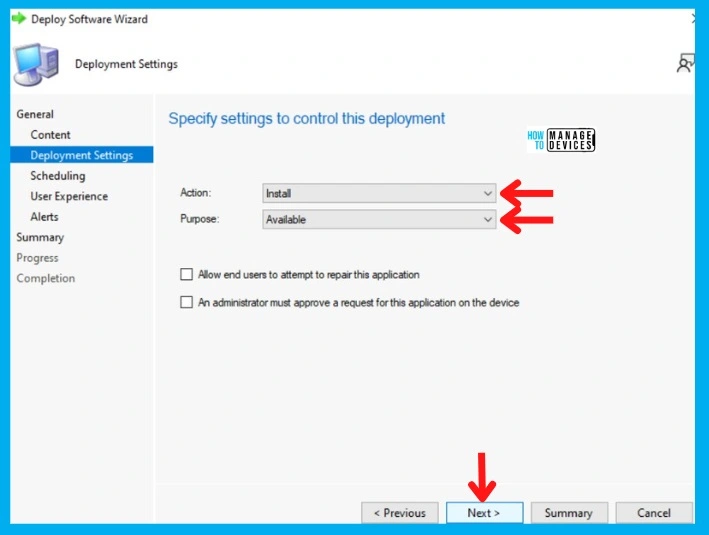
In the Scheduling Tab, enter the time details if you want it to be available at a specific time; otherwise, leave it as it is and click Next. After this, in the User Experience Tab,
- Select Display in Software Center and shows all notification options in the User notifications, and click on Next as shown below.
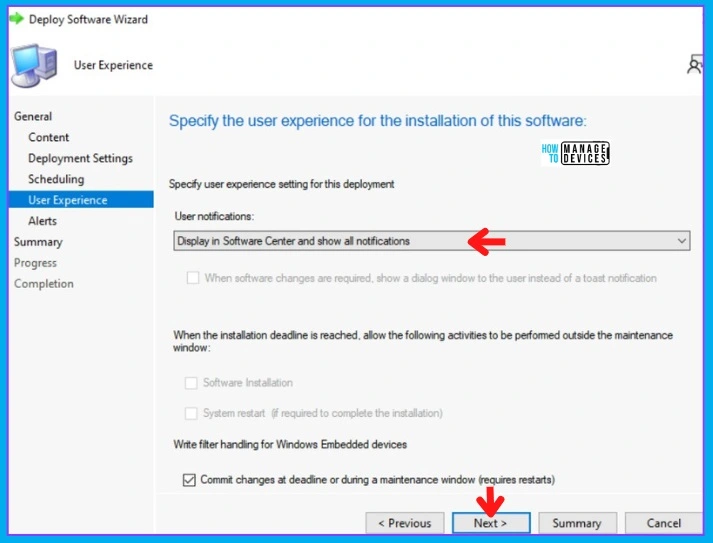
In the Alerts and Summary Tab, click on Next and to end the process, click on Close in the Completion Tab.
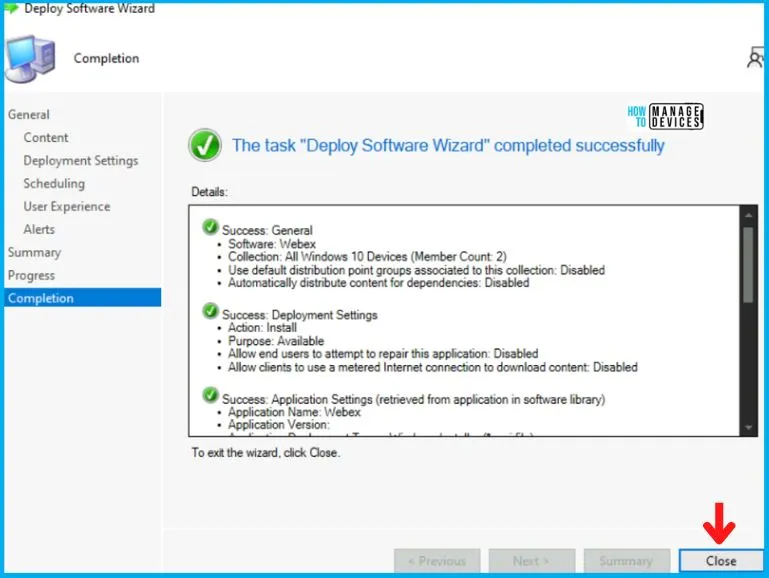
Cisco Webex Deployment – End User Experience
In this section, we will check the end-user experience for WEBEX Application Deployment and Installation. The WEBEX Application is Created, Distributed, and Deployed.
Now, if you check the Software Center of Win 10 device from the Windows 10 Device (or All Windows 11 Device) Collection, you will see the Application in Available Mode, and the user can install it as per the requirement.
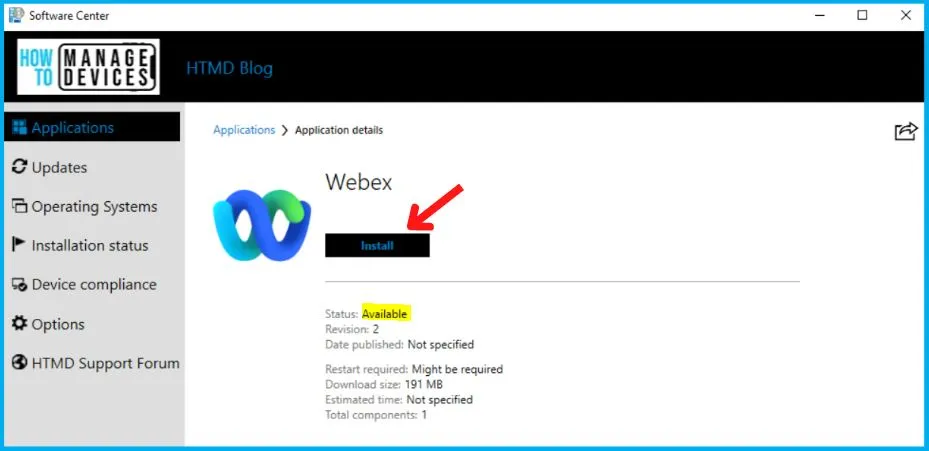
As you can see in the below screenshot, the WEBEX Application is installed successfully on Windows 10/11 devices. This proves that the above MSI installer works fine for WEBEX Application Installation using SCCM.
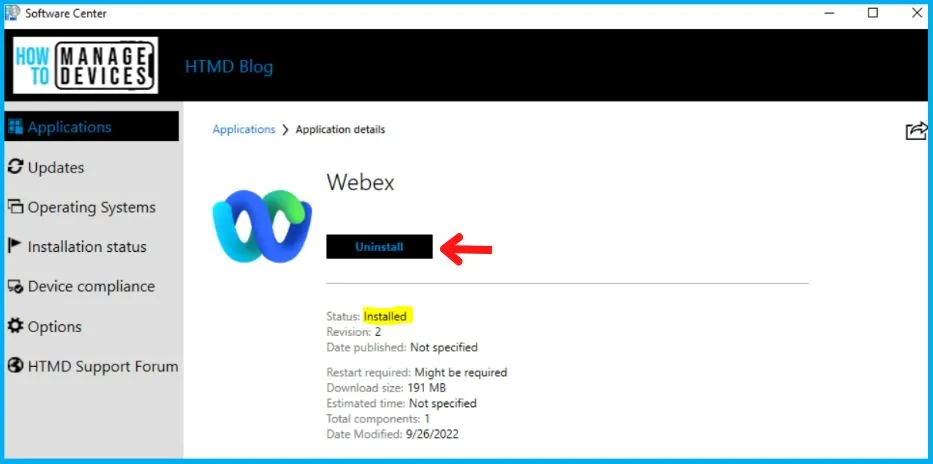
So the above picture clears that we have finally created, Distributed, Deployed, and Installed the Cisco WEBEX Application, as shown in the Software Center in the above image.
Author
Abhinav Rana is working as an SCCM Admin. He loves to help the community by sharing his knowledge. He is a BTech graduate in Information Technology.
